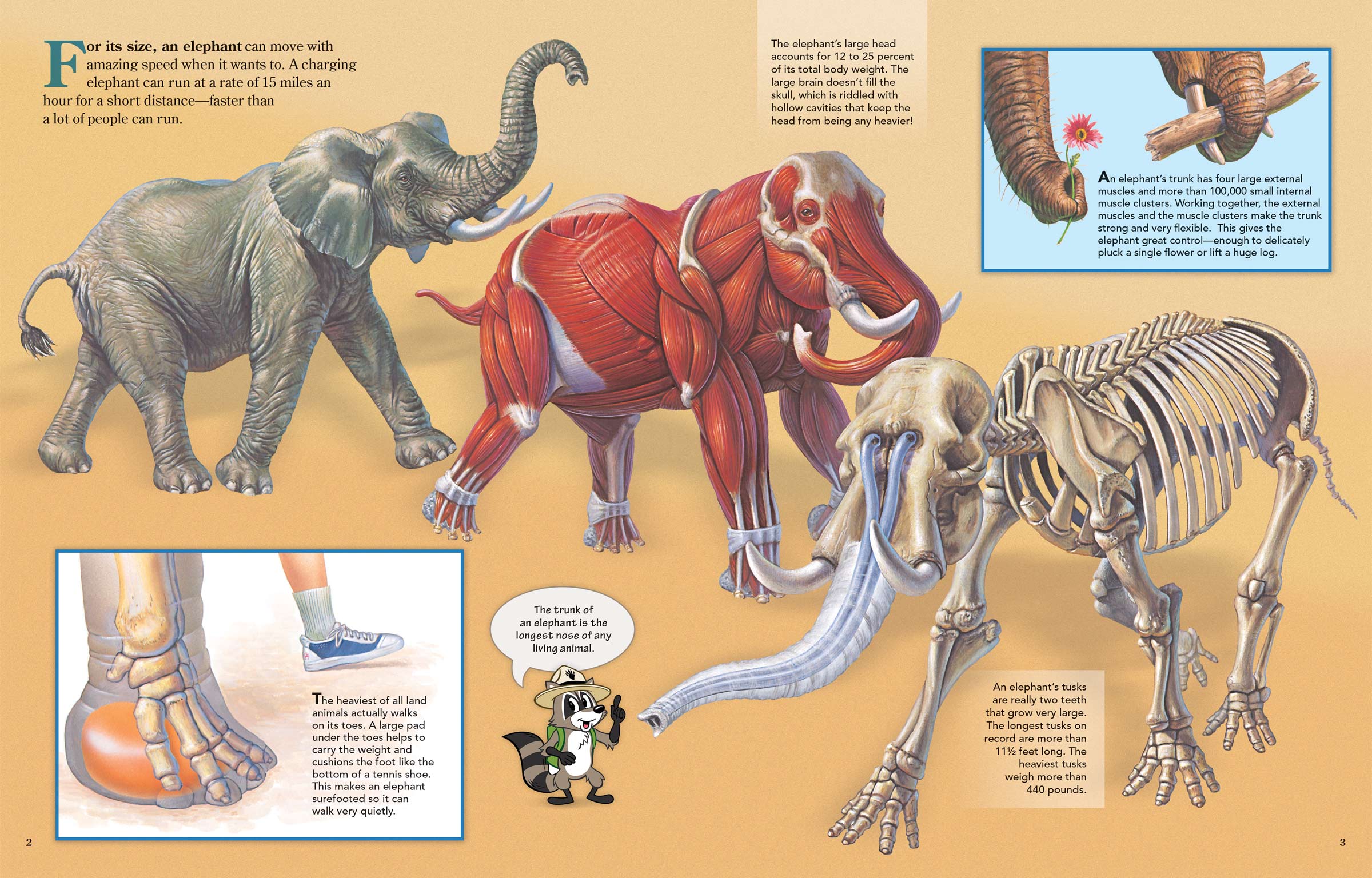
Elephants Can Run Faster Than You Can
ByFor its size, an elephant can move with amazing speed when it wants to. A charging elephant can run at a rate of 15 miles an hour for a short distance—faster than a lot of people can run.
The heaviest of all land animals actually walks on its toes. A large pad under the toes helps to carry the weight and cushions the foot like the bottom of a tennis shoe. This makes an elephant surefooted so it can walk very quietly.
 The trunk of an elephant is the longest nose of any living animal.
The trunk of an elephant is the longest nose of any living animal.
The elephant’s large head accounts for 12 to 25 percent of its total body weight. The large brain doesn’t fill the skull, which is riddled with hollow cavities that keep the head from being any heavier!
An elephant’s trunk has four large external muscles and more than 100,000 small internal muscle clusters. Working together, the external muscles and the muscle clusters make the trunk strong and very flexible. This gives the elephant great control—enough to delicately pluck a single flower or lift a huge log.
An elephant’s tusks are really two teeth that grow very large. The longest tusks on record are more than 11½ feet long. The heaviest tusks weigh more than 440 pounds.

